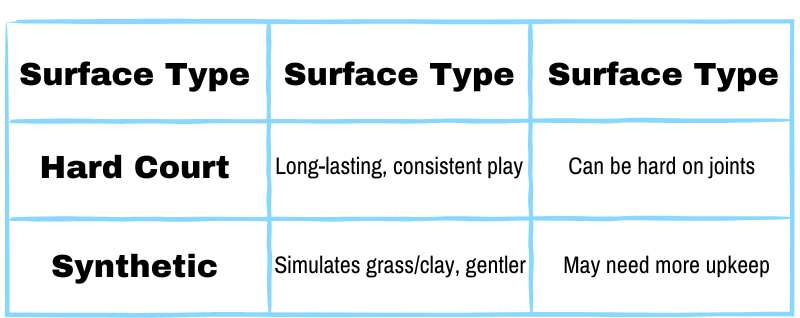A home indoor tennis court offers year-round play regardless of weather. It’s a luxury benefit for tennis lovers.
Having an indoor tennis court in your home is the ultimate indulgence for dedicated players looking for convenience and privacy. It allows for uninterrupted practice sessions and matches away from the elements, ensuring that rain or shine, the game goes on.
Building an indoor court involves significant investment, with considerations spanning from ample space to proper flooring and lighting. Such a feature not only enhances one’s lifestyle but also significantly increases the real estate value of the property. It’s a bespoke addition that caters to health and fitness while providing a social hub for friends and family. Before starting this project, one must research local building regulations, choose suitable materials, and plan for ongoing maintenance to preserve the court’s pristine condition.
Home Indoor Tennis Courts: A Luxury Or A Necessity?
Enjoying tennis without worrying about the weather is a major perk. With an indoor tennis court at home, rain or shine, your game goes on. The controlled environment of an indoor court means consistent conditions for play. No wind or sun to disrupt your serve. This means you can practice anytime, maintaining and improving your skills. An indoor court is a true luxury, allowing for comfortable play throughout the year. It’s perfect for those serious about their tennis game. It ensures your training is never on pause due to bad weather.
Designing Your Indoor Tennis Court
Designing your indoor tennis court needs careful planning. The right space and layout are key. Your court should measure 78 feet in length and 36 feet in width for doubles matches. This includes space for run-offs, so a total indoor area of 120 by 60 feet is ideal.
Choosing the surface material affects play quality and maintenance. Hard courts made of concrete or asphalt are popular. They offer durability and a consistent bounce. Artificial grass or synthetic surfaces mimic clay or grass courts and can be easier on the body.

Lighting And Climate Control
Proper lighting is crucial for a home indoor tennis court. It ensures players can see the ball clearly. High-quality, bright lights reduce shadows and glare. This is important for both safety and performance. Aim for uniform light distribution across the court.
Climate control is also key for indoor courts. It keeps the environment comfortable for play. Climate systems should maintain a consistent temperature. Humidity levels must be balanced to prevent floor warping and player discomfort. Advanced systems can filter the air for a healthier playing space.
Cost Considerations
Building a home indoor tennis court is a big project. The costs can be high. To estimate the investment, consider the size and materials. Building materials and labor are major expenses. Planning for cost-saving is crucial. Use energy-efficient lighting and durable materials to save money. Regular maintenance keeps costs down over time.
Building Regulations And Permits
Understanding zoning laws is key before building an indoor tennis court. Your local area has rules about land use. Check these rules first. They tell you what buildings you can make.
Your court size and placement may need approval. Talk to your local planning department. They will guide you. They ensure your plan fits the area’s rules.
Getting permits is a must for legal construction. Submit your building plans to authorities. They will look at them. If they agree, they give you a permit. This permit lets you start building. Without it, you can’t build your court. So, always get your permit first.
Maintenance And Upkeep
Maintaining your home indoor tennis court requires regular attention. For daily maintenance, ensure the surface is free from dirt and debris. Use a soft brush to sweep the court. Weekly tasks include checking for any signs of wear or damage. Address these issues promptly to prevent further damage. Monthly maintenance involves a deeper cleaning and inspection of the court’s surface and equipment.
Ensuring long-term durability for your court means being vigilant. Schedule annual resurfacing to keep the bounce consistent. Examine the surrounding areas for water leaks or moisture as they can cause serious harm. Always use appropriate cleaning solutions for your court type. This will help in preserving the color and playing characteristics. Remember, a well-kept court provides a better playing experience and reduces the risk of injury.

Tech Enhancements For Training
Ball machines and sensors boost your tennis skills at home. These tools help by sending balls at varying speeds and directions. This makes practice more like real games. Sensors track your hits. They show where improvements are needed.
Video analysis is another great tool. It lets you see your play on screen. You can spot mistakes easily. Coaches can also use these videos. They help them teach better ways to play. Watching and correcting can fast-track your skill growth.
Frequently Asked Questions
How Many Square Feet For An Indoor Tennis Court?
An indoor tennis court requires about 7,200 square feet of space. This allows for the court itself and the necessary clearance around it.
What Is The Cheapest Way To Cover A Tennis Court?
The cheapest way to cover a tennis court is by using polyethylene or mesh tarps, which offer an affordable and effective solution.
Can Tennis Be Played Indoors?
Yes, tennis can be played indoors. Many facilities offer indoor courts to allow play year-round, regardless of weather conditions. Indoor tennis ensures a consistent environment, unaffected by wind or rain.
Are Indoor And Outdoor Tennis Courts The Same?
Indoor and outdoor tennis courts differ in surface types and playing conditions. Outdoor courts can be affected by weather, while indoor courts offer a controlled environment.
Conclusion
Building a home indoor tennis court can truly transform your property and lifestyle. It offers year-round play, regardless of weather conditions. Remember, careful planning and professional help are key to ensuring a successful installation.
So, start designing your dream court today and enjoy endless hours of fun and fitness.


